Test Bank Nursing Now Todays Issues, Tomorrows Trends, 6th Edition Catalano
$55.00
Test Bank Nursing Now Todays Issues, Tomorrows Trends, 6th Edition Catalano
Get all 26 chapters via PDF or Word document for Test Bank Nursing Now Todays Issues, Tomorrows Trends, 6th Edition Catalano
You will instantly be able to download this test bank, we will send you an email with a download link and we will make it available for you in our Download Section – Private Area as soon as you checkout. We care about nursing students and we try to help students study better by providing them with authentic nursing test banks for a very affordable price.
Almost all of our clients graduate with honors and easily obtain Bachelors and Masters Degrees in Nursing. All orders are safe, secure, private and confidential. Get your nursing test bank for Test Bank Nursing Now Todays Issues, Tomorrows Trends, 6th Edition Catalano
Have you ever noticed, your nursing school requires a major investment of your precious capital, a huge commitment of your limited time or a complete restructuring of your entire life?
Guess what, today… in just a few minutes… with a simple, inexpensive trick… easily incorporated into your daily routine, you can set yourself well on the pathway to dynamic nursing and career success! And it all starts with a simple nursing test bank purchase on our website. Right after you checkout on our secure, private and confidential website, you will instantly download Test Bank Nursing Now Todays Issues, Tomorrows Trends, 6th Edition Catalano.
*** HERE IS A SAMPLE FOR YOU TO SEE ***
Chapter 2: Historical Perspectives
Multiple Choice
Identify the choice that best completes the statement or answers the question.
____ 1. The early Christian era brought which of these important changes in health care?
a. The development of aqueducts and sewage systems
b. A belief in the sanctity of life
c. A deep understanding of the anatomy of the human body
d. The shift of care from the home to large hospitals
____ 2. Which development during the European Middle Ages led to a major improvement in health care?
a. A rapid growth in medical knowledge
b. Establishment of large central hospitals
c. Growth of religious orders to care for the sick
d. A shift to care of ill persons by women
____ 3. Who is called the “father of modern medicine”?
a. William Harvey
b. Hippocrates
c. Cyrus the Great
d. Emperor Darius
____ 4. What are the dates of Florence Nightingale’s birth and death?
a. March 3, 1578; June 10, 1657
b. January 9, 1715; September 30, 1785
c. May 12, 1820; August 13, 1910
d. April 15, 1932; December 10, 1957
____ 5. Identify a key element in the success of Nightingale’s school of nursing.
a. It was not under control of the hospital.
b. Large amounts of private funds were paid to well-qualified teachers.
c. The Watson Model for nursing was used.
d. The primary goal was service to the hospital rather than education.
____ 6. What was a major goal of Lavinia Dock?
a. Establish a new nursing organization.
b. Publish a nursing journal.
c. Obtain the right to vote for women.
d. Improve the education of nurses.
____ 7. Which belief about what nurses needed to do shaped Lillian D. Wald’s nursing practice?
a. Spend more time in clinical preparation and less time in the classroom.
b. Fight political corruption to procure the types of legislation needed to improve social conditions.
c. Conduct more research into the conditions of hospital patients.
d. Stand up to medical doctors who were arrogant and obnoxious.
____ 8. Which problem had the most effect on nursing education during the 1920s and 1930s?
a. Too many college-based schools of nursing
b. A lack of qualified nursing instructors
c. Too many nursing students from the lower and middle classes
d. Not enough demand for educated nurses
____ 9. Identify a negative effect that World War II had on health care in the United States.
a. A rapid increase in medical knowledge
b. Expanded health-care services
c. Increased use of licensed practical nurses (LPNs) and aides to substitute for a lower number of registered nurses (RNs)
d. Increases in pay for nurses
____ 10. Select the statement that most accurately states the effects of increasing populations on health care.
a. Economically depressed populations have fewer health-care needs.
b. Larger populations often lead to large numbers of well-educated and well-nourished people.
c. Large groups of economically depressed people tend to live in rural areas.
d. Crowded living conditions in cities lead to the spread of communicable diseases.
____ 11. Which characteristic of health care in ancient civilizations distinguishes it from the health care of today?
a. Health care was closely related to religious practices.
b. Most health care was provided by women.
c. Health care focused on curing the sick and injured.
d. Physicians received extensive education in formal schools.
____ 12. What are two similarities between the health care provided by the ancient Hebrews and that practiced by the ancient Egyptians?
a. The belief that disease was caused by evil spirits and the use of health spas
b. Trained women as the primary care providers and the use of many medications
c. Majority of health care provided in hospitals and the use of medical specialization
d. Emphasis on sanitation and well-developed knowledge of surgical techniques
____ 13. Select the element of the medical practice of Hippocrates that remains appropriate for the health-care providers of the 21st century.
a. Belief that disease is a result of failure to comply with the natural law
b. The whole client needs to be treated: the mind, body, and spirit
c. Only physicians have enough education to provide safe health care
d. Hospitals should be avoided unless there are no other treatment options
____ 14. Identify the characteristic of ancient Roman society that distinguished the health-care practices of the empire from those of its surrounding neighbors.
a. Use of slaves to provide basic health care
b. Belief that the Roman Emperor was a descendent of a god
c. Lack of concern about the sanctity of life
d. Relatively high social status allotted to Roman women
____ 15. To what event and to which period of history is the disappearance of male nurses usually attributed?
a. The Crusades during the Dark Ages
b. The use of medical inventions during the Renaissance
c. The Protestant Reformation during the Middle Ages
d. The rapid population growth during the Industrial Revolution
____ 16. For which contribution to professional nursing is Isabel Adams Hampton Robb most noted?
a. Raising the standards for nursing education
b. Developing storefront clinics in New York City
c. Advocating the use of MASH units during the Korean War
d. Changing the laws that affect health care of the poor
Completion
Complete each statement.
17. The Dark Ages brought the advent of _________________________ that were composed exclusively of men who wore suits of armor to protect themselves and their hospitals.
18. List the following civilizations in their correct time sequence.
____ Greek Empire
____ Ancient Hebrews
____ Roman Empire
____ Egyptian Empire
____ Taoism
Chapter 2: Historical Perspectives
Answer Section
MULTIPLE CHOICE
1. ANS: B PTS: 1 DIF: Medium
KEY: Client Need: Safe and effective care environment | Cognitive Domain: Application | Integrated Process: Planning
2. ANS: C PTS: 1 DIF: Hard
KEY: Client Need: Safe and effective care environment | Cognitive Domain: Analysis | Integrated Process: Planning
3. ANS: A PTS: 1 DIF: Easy
KEY: Client Need: Safe and effective care environment | Cognitive Domain: Comprehension | Integrated Process: Planning
4. ANS: C PTS: 1 DIF: Easy
KEY: Client Need: Safe and effective care environment | Cognitive Domain: Comprehension | Integrated Process: Planning
5. ANS: A PTS: 1 DIF: Medium
KEY: Client Need: Safe and effective care environment | Cognitive Domain: Analysis | Integrated Process: Intervention
6. ANS: C PTS: 1 DIF: Medium
KEY: Client Need: Safe and effective care environment | Cognitive Domain: Application | Integrated Process: Intervention
7. ANS: B PTS: 1 DIF: Medium
KEY: Client Need: Safe and effective care environment | Cognitive Domain: Analysis | Integrated Process: Planning
8. ANS: B PTS: 1 DIF: Hard
KEY: Client Need: Safe and effective care environment | Cognitive Domain: Application | Integrated Process: Implementation
9. ANS: C PTS: 1 DIF: Medium
KEY: Client Need: Safe and effective care environment | Cognitive Domain: Analysis | Integrated Process: Problem identification
10. ANS: D PTS: 1 DIF: Easy
KEY: Client Need: Safe and effective care environment | Cognitive Domain: Comprehension | Integrated Process: Planning
11. ANS: A PTS: 1 DIF: Medium
KEY: Client Need: Intervention | Cognitive Domain: Knowledge | Integrated Process: Problem identification
12. ANS: D PTS: 1 DIF: Hard
KEY: Client Need: Safe and effective care environment | Cognitive Domain: Evaluation | Integrated Process: Evaluation
13. ANS: B PTS: 1 DIF: Hard
KEY: Client Need: Safe and effective care environment | Cognitive Domain: Analysis | Integrated Process: Evaluation
14. ANS: D PTS: 1 DIF: Medium
KEY: Client Need: Safe and effective care environment | Cognitive Domain: Analysis | Integrated Process: Implementation
15. ANS: C PTS: 1 DIF: Medium
KEY: Client Need: Psychosocial integrity | Cognitive Domain: Application | Integrated Process: Problem identification
16. ANS: A PTS: 1 DIF: Medium
KEY: Client Need: Safe and effective care environment | Cognitive Domain: Comprehension | Integrated Process: Intervention
COMPLETION
17. ANS: military nursing orders
PTS: 1 DIF: Medium
KEY: Client Need: Safe and effective care environment | Cognitive Domain: Comprehension | Integrated Process: Problem identification
18. ANS:
5, 4, 2, 1, 3
5 4 2 1 3
PTS: 1 DIF: Hard
KEY: Client Need: Safe and effective care environment | Cognitive Domain: Analysis | Integrated Process: Intervention
If you have questions, just fling an e-mail to us: Email [email protected] if you have any questions

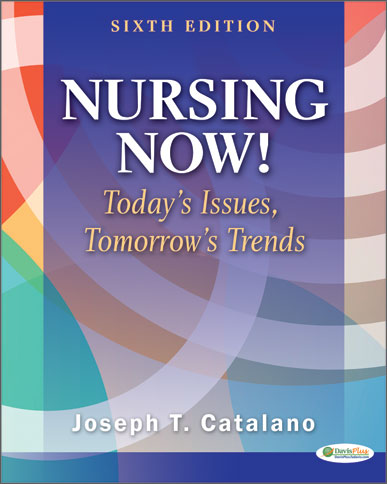
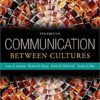





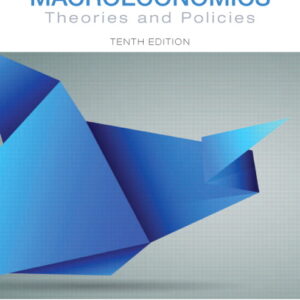

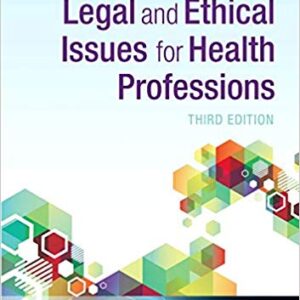
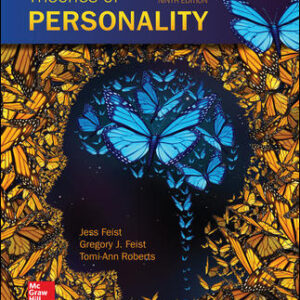
Reviews
There are no reviews yet.